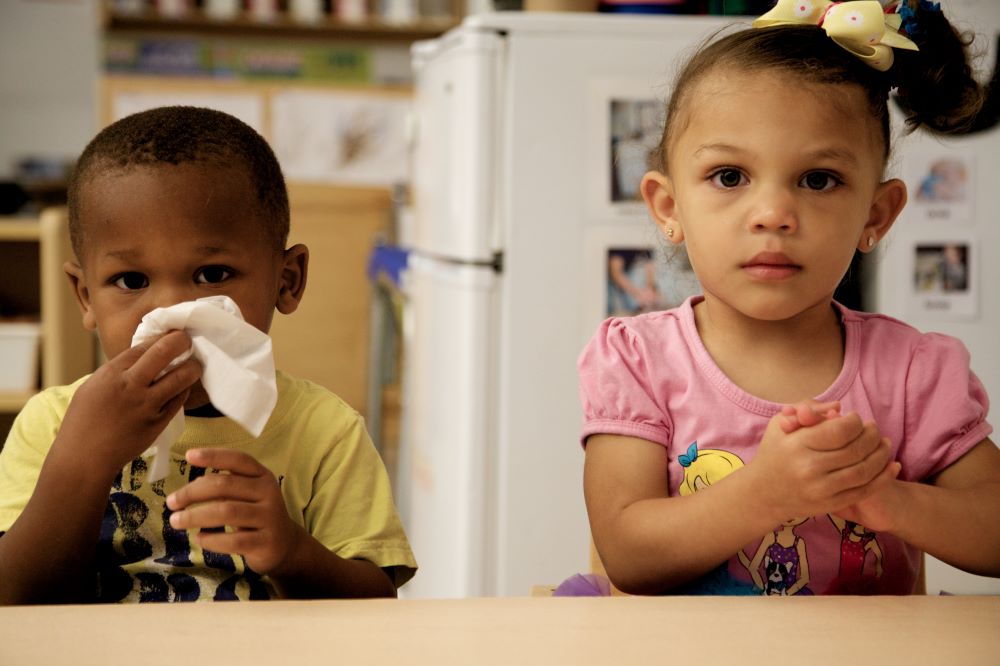 Children can get sick more than adults because their immune systems are not fully developed and early childhood settings can have a lot of germs. Germs can spread easily with children playing near each other, touching lots of objects and surfaces as they explore, sharing toys, and putting things in their mouths. It is common for children to have six to eight colds a year.
Children can get sick more than adults because their immune systems are not fully developed and early childhood settings can have a lot of germs. Germs can spread easily with children playing near each other, touching lots of objects and surfaces as they explore, sharing toys, and putting things in their mouths. It is common for children to have six to eight colds a year.
Other common childhood health conditions that are not spread by germs are allergies, skin problems, eye conditions, neurological issues, and gastrointestinal conditions. Programs should understand which conditions affect certain age groups and how to best promote good health.
Head Start programs can help reduce the spread of childhood illnesses by teaching children good hygiene practices, completing daily health checks, and knowing when to send children home to avoid spread. Caring for Our Children Signs and Symptoms Chart provides guidance. This chart helps programs understand symptoms, when to tell families of illness, and how long children should stay home when they are sick.
Tips and Strategies for Preventing Common Childhood Illnesses in Head Start Programs
- Create a policy and steps for managing common childhood illnesses.
- Refer to the infectious disease control chapter.
Learn More
- HealthyChildren.org
- KidsHealth
- Information on Diseases and Conditions for Parents
Read more:
Resource Type: Article
National Centers: Health, Behavioral Health, and Safety
Audience: Directors and Managers
Last Updated: September 18, 2024